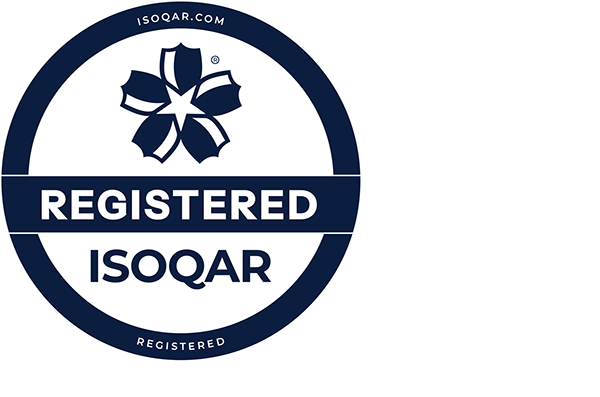Utility Verification Survey
Typically performed to PAS 128 Survey Category Type A standards, these types of surveys are crucial to ensure the most accurate information is available on the status and position of buried utilities.
Our team are highly experienced in performing underground utility verification surveys.
For this type of survey, a visual inspection is performed to verify the location of underground utilities using intrusive investigation or via existing inspection chambers.
Visual inspection of underground utilities
Under PAS 128 Type A, visual detection, verification and location of the underground utilities is achieved either using an inspection chamber or trial pit. Accurate measurements of the buried services are taken, including the location of the excavation, underground utility depth and geospatial location. Visual inspection of underground utilitiesDigital photographs are taken of the survey area, open excavation and exposed utilities to be included in the final report.
What is PAS 128?
PAS 128 is a publicly available specification that sets the standard for underground utility surveys in the UK. Introduced by the British Standards Institute (BSI), PAS 128 is the current specification for underground utility detection and location that allows a consistent standard to be delivered throughout the industry.
It also means that best practices can be followed when performing inspections.
The result is an improved project planning and scoping process, reducing resultant variable risk for end users, and providing quality information for construction works or any other project that requires accurate underground utility information.
PAS 128 utility survey types
PAS 128 Survey Category Type D - Desktop utility records search
Survey type D is a desktop utility records search using various sources including information provided by known utility owners. This type of survey is undertaken for information purposes and not as part of a formal inspection or where utilities may be disturbed in the course of the works.
As a desktop survey, Survey type D investigations are undertaken remotely, not on site.
PAS 128 Survey Category Type C - Site Reconnaissance Survey
Survey type C combines a records search with an above ground on site reconnaissance survey to try to locate buried services. Survey type C investigations do not provide as accurate a location as type A or B, which involve more detailed survey techniques.
PAS 128 Survey Category Type B - Geophysical Survey
Survey Type B uses non-intrusive geophysical techniques such as Ground Penetrating Radar (GPR) and radio detection and electromagnetic location equipment for utility detection.
Type B underground utility surveys provide more accurate information on underground utilities and subsurface structures in comparison to Types C & D.
By using geophysical methods, the risk of damage is minimised. Learn more about our non-intrusive geophysical surveys here.
PAS 128 Survey Category Type A - Intrusive Visual Inspection
Utility Survey type A involves on-site intrusive utility detection, verification and location either using inspection chambers or trial pits/slit trenches.
Type A utility surveys are the most accurate of the survey types as the underground utility detection, verification and positioning is backed up by a visual inspection.
Inspection chambers
Inspection chambers are metal, watertight cylinders of varying diameters and depths that allow a property owner or inspector to safely inspect underground utilities without the need for excavation.
Inspection chambers provide an accurate location of underground utilities at risk from damage during construction works as they open up a known area on site.
They can be used to inspect underground utilities such as water, gas, electricity and telecommunications.




What are the benefits of PAS 128?
Underground utility detection, verification and positioning to PAS 128 standards brings a range of benefits. The standard allows consistency, improved public safety and reduced risk of damage to underground utilities.
It also provides valuable information for future project planning and scoping, allowing the investigation requirements for detailed design to be fully understood at an early stage.
The benefits of a rigorous utility mapping process in terms of public safety and reduced risk from damage and disruption to services is well understood by the construction industry.
Now more than ever, companies involved in construction works should be ensuring that their utility surveys and processes meet the PAS 128 standard.
Not only does this help to reduce the risk of damage and disruption to services, but it also ensures that accurate records are created to support any future requirements or disputes regarding underground utilities on site.
What underground utilities does PAS 128 apply to?
The PAS 128 standard for underground utility surveys can be applied to all types of utilities, including:
- Water pipelines
- Electricity cables
- Oil and gas pipelines
- Drainage and sewage pipelines
- Telecommunications and fibre optics cables
What is included in utility survey reports?
The final report will also include information such as utility type, diameter (external) and material.
It will also note adjacent utility markers and protection or shields and any accompanying utility apparatus such as pilot cables next to HV cabling.
How long does a utility survey take?
The time taken to undertake a utility verification will depend on the size of the site, the number of utilities located on-site and how complicated they are. Some utility surveys can take days while others may only take several hours.
For an accurate estimate, please contact our team.
Get a quote for underground utility detection and verification
For a free, no-obligation quote please contact our team with your requirements or fill out our online form.






